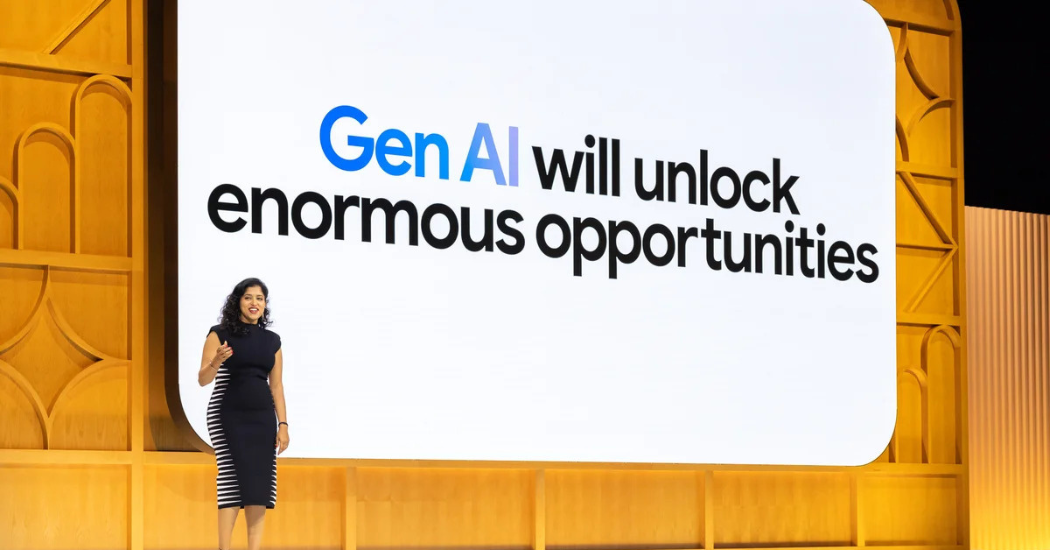Google Marketing Live Recap: The AI Future Is Upon Us

At the end of Google’s annual Google Marketing Live (GML) event on May 21, there was one very clear takeaway: AI-powered advertising tools are here, and they’re here to stay.
After demonstrating the power of Google’s AI infrastructure with a glimpse into Project Astra, Google’s vision for an AI assistant, Google SVP & Chief Business Officer Philipp Schindler went on to describe Google’s rollout of this technology across both the user experience and the advertising tools.
AI Overviews
One of the key ways Google is implementing AI is through overviews as a feature of the Search Engine Results Pages (SERP). Touting the statistic that Google searches of five or more words grew
1.5x faster than shorter searches, Schindler described AI Overviews as an opportunity for Google to provide tailored answers to its users, leading to better information for the user with the users who continue to click through to other sites being higher quality users and spending more time on the site.
While it is still unclear how advertising will factor into these AI overviews, for the moment it may not matter. Despite this feature being rolled out more broadly across the U.S. starting in mid-May, Google has already begun rolling back this feature due to a significant number of incorrect responses being generated.
Even with the hiccups, this is still a feature to track closely. As the tool improves and is rolled back out to users, there will likely be substantial changes to how search advertisers capture traffic. With more users finding the answers they need via the SERP, click-throughs will drop and cost per click will likely increase, emphasizing the focus on driving the highest quality traffic and ensuring a smooth on-site experience to maximize performance.
Google’s “Power Pair”
Next up on the list are two of Google’s products already live and being leveraged by many advertisers globally: Broad Match and Performance Max. It’s easy to think of Broad Match and get a shiver down your spine with memories of poor performance and irrelevant traffic, but AI-powered Broad Match has improved substantially. Leveraging signals based not only on keywords, but also on the landing page, time of day, user location and more, Broad Match has become a tactic worth testing again. While no test should be run blindly, for brands who are maximizing their current search campaigns, Broad Match can be a significant growth driver, capturing incremental conversions as well as providing learnings to expand keyword lists for Exact and Phrase Match. At Rain, we’ve tested Broad Match since the rollout of AI and have seen it perform significantly better than in years past, and it will be something we continue to leverage where it makes sense for our clients.
Performance Max has been a hot topic for multiple years now as well, with advertisers asking questions centered around visibility and control of these campaigns. To start to quell these concerns, Google has announced a series of reporting enhancements. This began with more granular placement reporting over the last few months, and at GML Google announced that this improved visibility is now coming through asset-level reporting as well. This asset-level reporting will be instrumental to advertisers to help understand which assets are performing best, improving the ability to cater messaging to each brand’s unique audience. This tool will become increasingly useful as well with the rollout of…
AI-Powered Creative Tools
Creative is an immensely important piece of any brand’s marketing strategy, but with the wide variety of available placements, not only on Google but across the media landscape, it can be expensive and time consuming for brands to develop enough creative to meet all their needs.
To help ease this pain, Google has begun rolling out AI-powered creative tools, allowing brands to share their brand guidelines, provide examples, and drive the tool to develop large amounts of creative rapidly. Not only can teams develop brand creative, but e-commerce advertisers will be able to take their own products and place them in AI-generated settings to maximize engagement. To take it a step further, not only can these images be used in Performance Max or Demand Generation campaigns easily, but brands are free to use them in any other marketing efforts as they see fit.
Profit-Margin Based Bidding
Another major tool coming out of GML was the addition of profit-based bid strategies. An enhancement to the AI-powered Smart Bidding solution that Google has already offered, advertisers are now able to enter data around the margins of their products, allowing brands to spend their dollars as wisely as possible. Smart Bidding has been a powerful tool that we at Rain have been leveraging across our search campaigns for years. Adding this capability to the mix allows for additional levers, and provides the ability to seamlessly switch from a focus on revenue to a focus on product, or vice versa, with a click of the mouse.
Google has made it very clear that AI tools are going to be a key tool for advertisers to make the most of their marketing programs. While these tools are not all perfect today, the world of AI is changing fast, and the team at Rain is focused on being on the cutting edge to ensure that our clients are able to reap the full benefits of these tools. All in all, one thing is clear, the AI future is here. Are you ready?
This article is featured in Media Impact Report No. 56. View the full report here.
